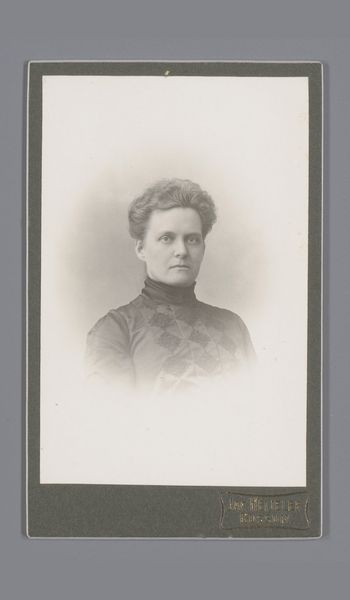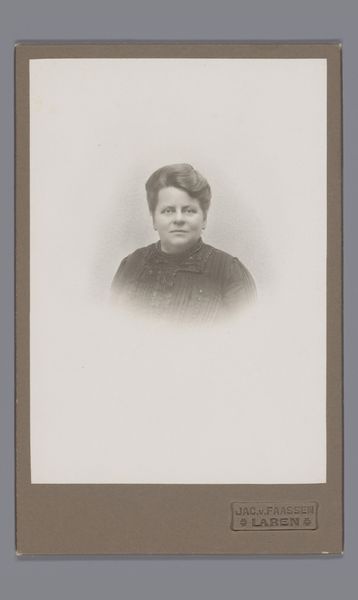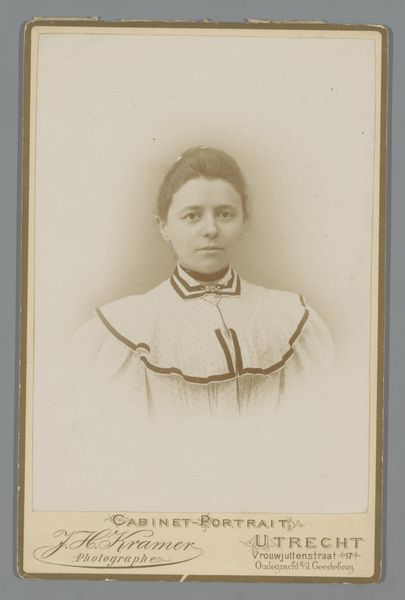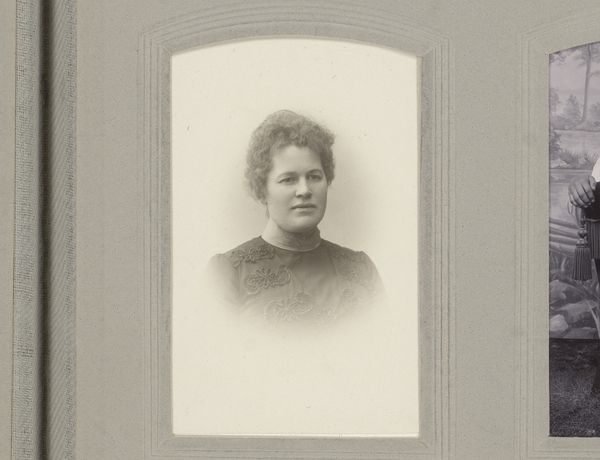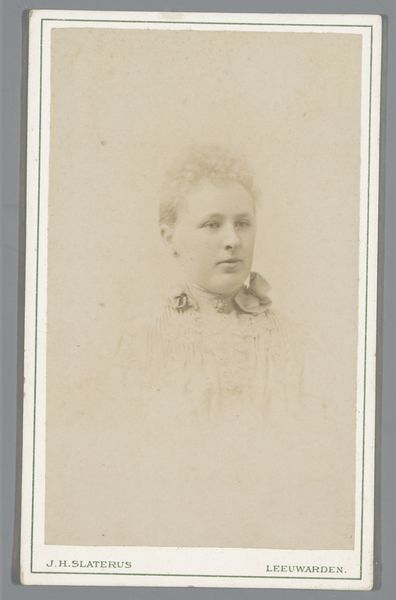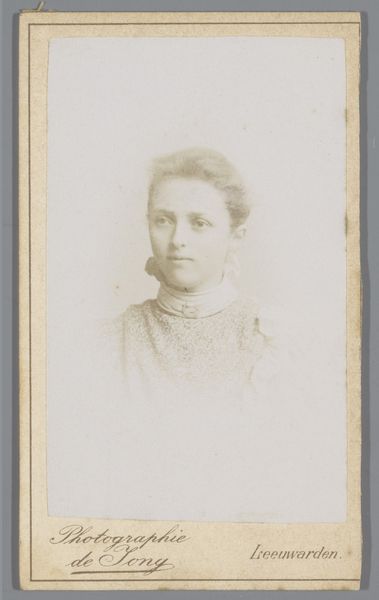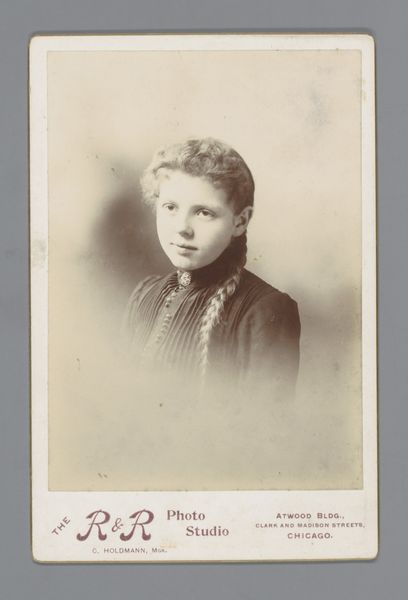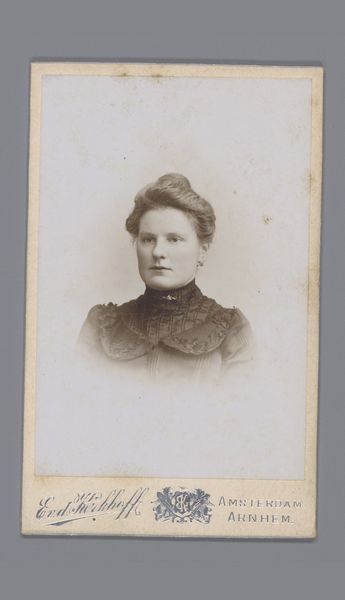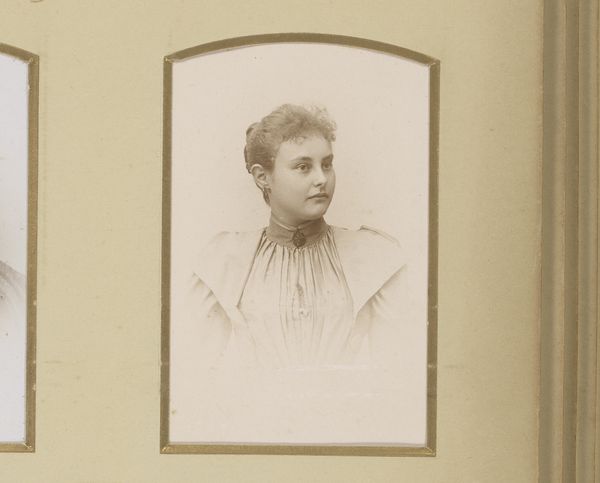
Dimensions: height 92 mm, width 66 mm
Copyright: Rijks Museum: Open Domain
Curator: This is "Portrait of an Unknown Woman," a photograph by Leonardus Pieter Tismeer, dating roughly from 1910 to 1920. Editor: There's a directness in her gaze that really captures me. The almost monochromatic palette lends it a stark, unflinching quality. Curator: Indeed. Tismeer, as a photographer working during that era, navigated a rapidly evolving social landscape. Photography, then, wasn't merely documentation; it was a tool for constructing identity, both individual and collective. Think about how these portraits circulated: displayed in homes, shared among families. This image participated in shaping notions of feminine identity. Editor: Absolutely. The composition reinforces this idea of constructed identity. She's positioned centrally, almost symmetrically, and her clothing is very proper. There is nothing chaotic about the formal design or visual elements—it's about presenting a certain controlled image. Her garment is dark, and while the pattern can’t be precisely deciphered, there is nothing gaudy or excessive. Curator: And the light further models that feeling. Notice the softness—almost diffusion. The lighting doesn’t create stark contrasts, but softens the edges to allow viewers a romantic viewing. Tismeer employs light, essentially, as a kind of soft power—a manipulation of visibility itself. Editor: It begs the question, then: who was she, this unknown woman? We look for some glimpse beyond the pose, beyond the constructed image she wanted portrayed. Perhaps it’s in the ever so slight tightening around her eyes and pursing of lips, giving that sense of strength? It seems contradictory. Curator: The real power, then, lies in what remains unseen and unsaid. Tismeer provides a mirror to past ideals. The social power in her day cannot be determined by present day judgements. We do know, from careful observation and historical contextualization, how society molded those values in women’s life. Editor: The image stays with me, I think because she transcends being just a face from the past. This woman had feelings and the overall tone and subtle gradations of shadows creates a striking yet very serene representation. Curator: It reminds us to approach such portraits with empathy and critical awareness. And maybe, through this photographic window, we catch a fleeting reflection of ourselves.
Comments
No comments
Be the first to comment and join the conversation on the ultimate creative platform.
